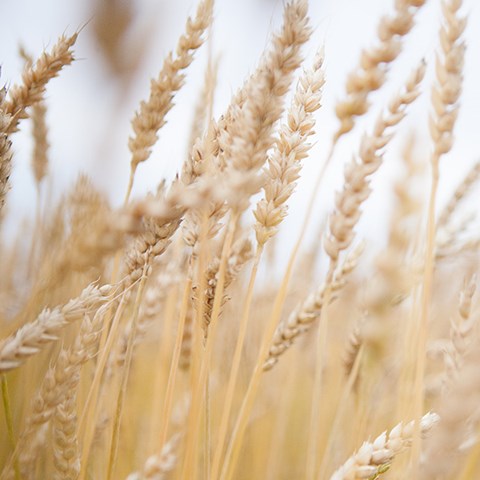Contact
Martin Weih, Professor
Department of Crop Production Ecology, SLU
martin.weih@slu.se 018-672543

Plants need at least 16 nutrients, but many studies measure only nitrogen as it is considered to well reflect the plant's nutritional status. But it has never really been tested systematically how well the variation in nitrogen concentration represents the variation in other nutrients. Now a new study from Swedish University of Agricultural Sciences shows that we can safely continue to measure nitrogen as an indicator of the general plant nutritional status.
Martin Weih and his colleagues at the department of Crop Production Ecology studied what happens with the nutrients in the plant from seed to seed. This knowledge can ultimately be used for the development of a tool for the prediction of nutrient-related impacts on crop yields and associated crop management actions.
The researchers used data from a long-term trial in Central Sweden (Säby) and studied the concentrations of 11 nutrient elements in winter wheat during an entire growing cycle from seed to seed. They chose one wet year and one dry year.
The idea was to investigate how the nutrient balance was affected by developmental stage, weather conditions and the preceding crop. It turned out that both the development stage and weather conditions strongly influenced the nutritional balance (stoichiometry) of the crop. However, the study did not show any clear evidence for short-term effects of the preceding crop on the nutrient stoichiometry of winter wheat.
- We had expected that different preceding crops, in this case canola, flax, ley and winter wheat, could affect the nutritional balance of the winter wheat. This would give us the ability to identify possible nutritional effects of preceding crops on winter wheat yield at an early stage, before the effect on the yield is visible, says Martin Weih.
The results showed that preceding crops affected the concentrations of individual nutrients in some years, but the researchers found no systematic pattern. This may indicate that the potential effects of a preceding crop on the yield are not linked to the nutritional balance, but other factors. It may also be that the preceding crop did not affect crop yield in this particular trial, or that nutrient-related effects only become visible after longer time.
- Despite this negative result, we believe that nutrient stoichiometry may have great potential as a tool for taking the pulse of the crops at an early stage and, e.g. through appropriate management actions, counteract potential future harvest losses linked to the crop nutrient balance, says Martin Weih.
The study also confirmed that nitrogen is a representative element indicating the variation of many other plant nutrients - something that is often taken for granted in both research and advisory despite that it has not been tested thoroughly.
- I was pretty open to the idea that nitrogen might not be as good indicator as we often assume but it turned out that we can safely continue to measure nitrogen as a more general indicator of plant nutrient status, says Martin Weih.
Martin Weih, Professor
Department of Crop Production Ecology, SLU
martin.weih@slu.se 018-672543
Nutrient stoichiometry in winter wheat: Element concentration pattern reflects developmental stage and weather, M. Weih, F. Pourazari & G. Vico, Scientific Reports